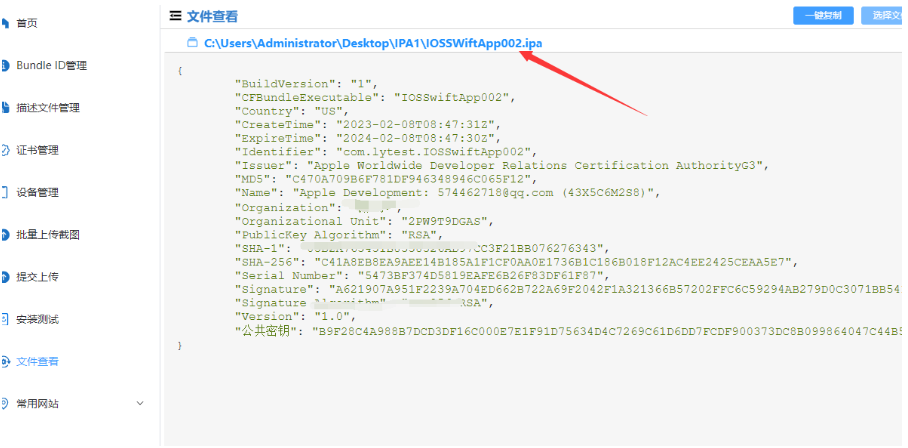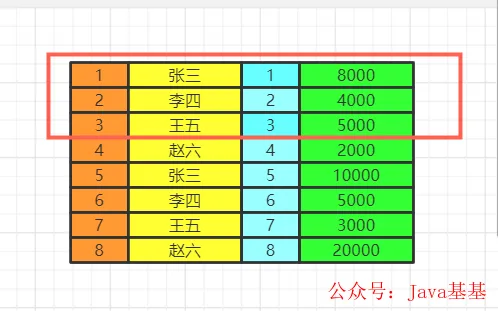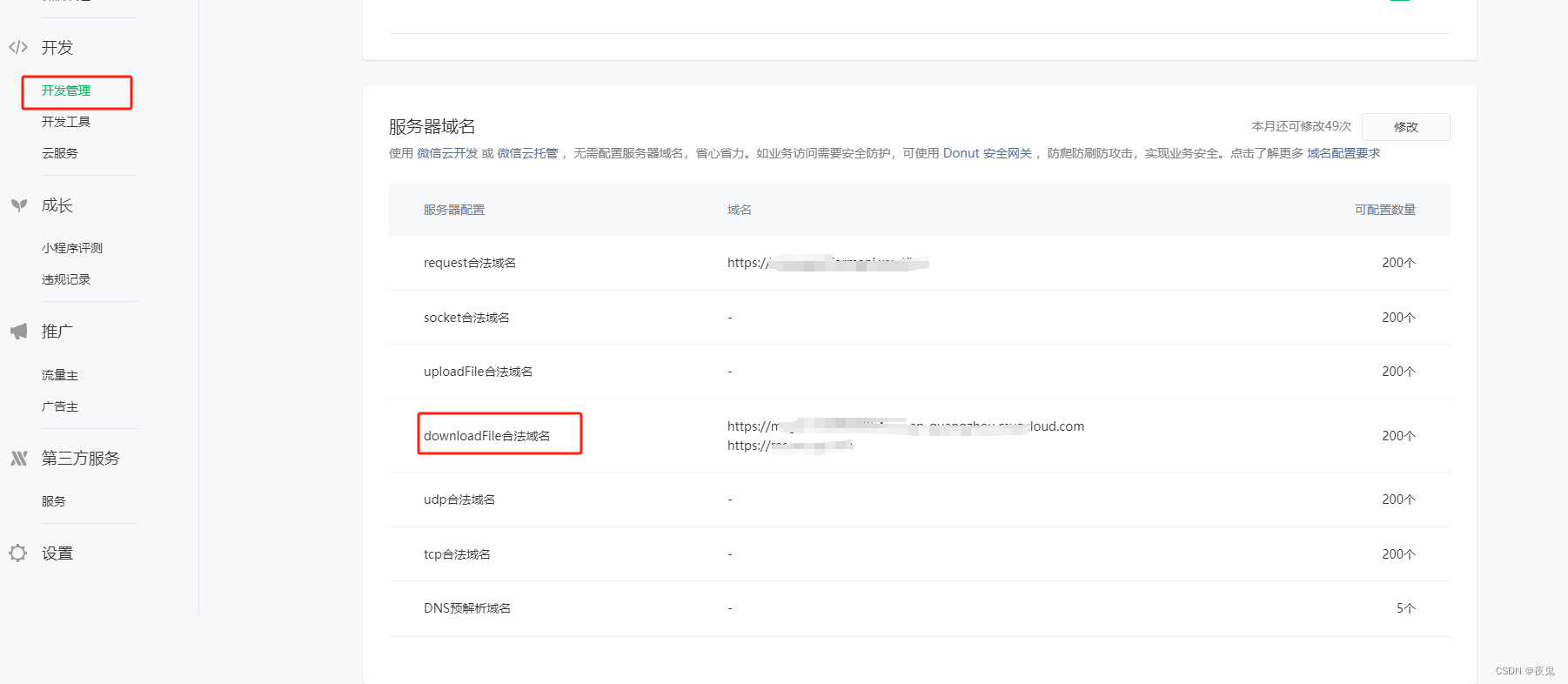.\pandas-ta\pandas_ta\momentum\stc.py
# -*- coding: utf-8 -*-
从 pandas 库中导入 DataFrame 和 Series 类
从 pandas_ta.overlap 模块中导入 ema 函数
从 pandas_ta.utils 模块中导入 get_offset、non_zero_range 和 verify_series 函数# 定义函数:Schaff Trend Cycle (STC)
def stc(close, tclength=None, fast=None, slow=None, factor=None, offset=None, **kwargs):# 验证参数tclength = int(tclength) if tclength and tclength > 0 else 10fast = int(fast) if fast and fast > 0 else 12slow = int(slow) if slow and slow > 0 else 26factor = float(factor) if factor and factor > 0 else 0.5# 如果慢线小于快线,则交换它们的值if slow < fast: fast, slow = slow, fast# 计算所需数据的长度,取最大值_length = max(tclength, fast, slow)# 验证收盘价数据,返回验证后的 Series 对象close = verify_series(close, _length)# 获取偏移量offset = get_offset(offset)# 如果收盘价为 None,则返回if close is None: return# kwargs 允许传递三个更多的 Series(ma1、ma2 和 osc),这些可以在这里传递,# ma1 和 ma2 输入会抵消内部的 ema 计算,osc 替代了两个 ma。ma1 = kwargs.pop("ma1", False)ma2 = kwargs.pop("ma2", False)osc = kwargs.pop("osc", False)# 3 种不同的计算模式..if isinstance(ma1, Series) and isinstance(ma2, Series) and not osc:# 验证输入的两个外部 Series 对象ma1 = verify_series(ma1, _length)ma2 = verify_series(ma2, _length)# 如果其中一个为 None,则返回if ma1 is None or ma2 is None: return# 根据外部提供的 Series 计算结果xmacd = ma1 - ma2# 调用共享计算函数pff, pf = schaff_tc(close, xmacd, tclength, factor)elif isinstance(osc, Series):# 验证输入的振荡器 Series 对象osc = verify_series(osc, _length)# 如果为 None,则返回if osc is None: return# 根据提供的振荡器计算结果(应在 0 轴附近)xmacd = osc# 调用共享计算函数pff, pf = schaff_tc(close, xmacd, tclength, factor)else:# 计算结果..(传统/完整)# MACD 线fastma = ema(close, length=fast)slowma = ema(close, length=slow)xmacd = fastma - slowma# 调用共享计算函数pff, pf = schaff_tc(close, xmacd, tclength, factor)# 结果 Seriesstc = Series(pff, index=close.index)macd = Series(xmacd, index=close.index)stoch = Series(pf, index=close.index)# 偏移if offset != 0:stc = stc.shift(offset)macd = macd.shift(offset)stoch = stoch.shift(offset)# 填充缺失值if "fillna" in kwargs:stc.fillna(kwargs["fillna"], inplace=True)macd.fillna(kwargs["fillna"], inplace=True)stoch.fillna(kwargs["fillna"], inplace=True)if "fill_method" in kwargs:stc.fillna(method=kwargs["fill_method"], inplace=True)macd.fillna(method=kwargs["fill_method"], inplace=True)stoch.fillna(method=kwargs["fill_method"], inplace=True)# 命名和分类_props = f"_{tclength}_{fast}_{slow}_{factor}"stc.name = f"STC{_props}"macd.name = f"STCmacd{_props}"# 设置 stoch 对象的名称属性为包含 _props 的字符串stoch.name = f"STCstoch{_props}"# 设置 stc 和 macd 对象的 category 属性为 "momentum"stc.category = macd.category = stoch.category ="momentum"# 准备要返回的 DataFrame# 创建一个字典,包含 stc.name、macd.name 和 stoch.name 作为键,对应的对象为值data = {stc.name: stc, macd.name: macd, stoch.name: stoch}# 用 data 字典创建 DataFrame 对象df = DataFrame(data)# 设置 DataFrame 对象的名称属性为包含 _props 的字符串df.name = f"STC{_props}"# 设置 DataFrame 对象的 category 属性为 stc 对象的 category 属性df.category = stc.category# 返回 DataFrame 对象return df
# 设置 stc 的文档字符串,描述 Schaff Trend Cycle(STC)指标的计算方法和用法
stc.__doc__ = \
"""Schaff Trend Cycle (STC)The Schaff Trend Cycle is an evolution of the popular MACD incorportating two
cascaded stochastic calculations with additional smoothing.The STC returns also the beginning MACD result as well as the result after the
first stochastic including its smoothing. This implementation has been extended
for Pandas TA to also allow for separatly feeding any other two moving Averages
(as ma1 and ma2) or to skip this to feed an oscillator (osc), based on which the
Schaff Trend Cycle should be calculated.Feed external moving averages:
Internally calculation..stc = ta.stc(close=df["close"], tclen=stc_tclen, fast=ma1_interval, slow=ma2_interval, factor=stc_factor)
becomes..extMa1 = df.ta.zlma(close=df["close"], length=ma1_interval, append=True)extMa2 = df.ta.ema(close=df["close"], length=ma2_interval, append=True)stc = ta.stc(close=df["close"], tclen=stc_tclen, ma1=extMa1, ma2=extMa2, factor=stc_factor)The same goes for osc=, which allows the input of an externally calculated oscillator, overriding ma1 & ma2.Sources:Implemented by rengel8 based on work found here:https://www.prorealcode.com/prorealtime-indicators/schaff-trend-cycle2/Calculation:STCmacd = Moving Average Convergance/Divergance or OscillatorSTCstoch = Intermediate Stochastic of MACD/Osc.2nd Stochastic including filtering with results in theSTC = Schaff Trend CycleArgs:close (pd.Series): Series of 'close's, used for indexing Series, mandatorytclen (int): SchaffTC Signal-Line length. Default: 10 (adjust to the half of cycle)fast (int): The short period. Default: 12slow (int): The long period. Default: 26factor (float): smoothing factor for last stoch. calculation. Default: 0.5offset (int): How many periods to offset the result. Default: 0Kwargs:ma1: 1st moving average provided externally (mandatory in conjuction with ma2)ma2: 2nd moving average provided externally (mandatory in conjuction with ma1)osc: an externally feeded osillatorfillna (value, optional): pd.DataFrame.fillna(value)fill_method (value, optional): Type of fill methodReturns:pd.DataFrame: stc, macd, stoch
"""# 定义 Schaff Trend Cycle(STC)计算函数
def schaff_tc(close, xmacd, tclength, factor):# 实际计算部分,这部分计算适用于不同的操作模式# 1. MACD 的 Stochastic# 计算区间 tclen 内 xmacd 的最小值lowest_xmacd = xmacd.rolling(tclength).min() # min value in interval tclen# 计算区间 tclen 内 xmacd 的范围(最大值 - 最小值)xmacd_range = non_zero_range(xmacd.rolling(tclength).max(), lowest_xmacd)# 获取 xmacd 的长度m = len(xmacd)# 计算 MACD 的快速 %K# 初始化 stoch1 和 pf 列表stoch1, pf = list(xmacd), list(xmacd)# 第一个元素的值为 0stoch1[0], pf[0] = 0, 0# 循环计算 stoch1 和 pf 列表中的值for i in range(1, m):# 如果 lowest_xmacd[i] 大于 0,则计算快速 %Kif lowest_xmacd[i] > 0:stoch1[i] = 100 * ((xmacd[i] - lowest_xmacd[i]) / xmacd_range[i])else:# 否则保持前一个值不变stoch1[i] = stoch1[i - 1]# 计算平滑后的 %Dpf[i] = round(pf[i - 1] + (factor * (stoch1[i] - pf[i - 1])), 8)# 将 pf 转换为 Series 类型,并以 close 的索引为索引pf = Series(pf, index=close.index)# 计算平滑后的 Percent Fast D, 'PF' 的随机指标# 计算滚动窗口为 tclength 的最小值lowest_pf = pf.rolling(tclength).min()# 计算 pf 在滚动窗口为 tclength 的范围内的非零范围pf_range = non_zero_range(pf.rolling(tclength).max(), lowest_pf)# 计算 % Fast K of PFstoch2, pff = list(xmacd), list(xmacd)stoch2[0], pff[0] = 0, 0for i in range(1, m):if pf_range[i] > 0:# 计算 % Fast K of PFstoch2[i] = 100 * ((pf[i] - lowest_pf[i]) / pf_range[i])else:stoch2[i] = stoch2[i - 1]# 计算平滑后的 % Fast D of PF# 使用平滑因子 factor 进行平滑计算pff[i] = round(pff[i - 1] + (factor * (stoch2[i] - pff[i - 1])), 8)# 返回平滑后的 % Fast D of PF 和原始的 PFreturn [pff, pf]
# `.\pandas-ta\pandas_ta\momentum\stoch.py````py
# -*- coding: utf-8 -*-
# 导入DataFrame类
from pandas import DataFrame
# 从pandas_ta.overlap模块中导入ma函数
from pandas_ta.overlap import ma
# 从pandas_ta.utils模块中导入get_offset、non_zero_range和verify_series函数
from pandas_ta.utils import get_offset, non_zero_range, verify_series# 定义Stochastic Oscillator (STOCH)函数
def stoch(high, low, close, k=None, d=None, smooth_k=None, mamode=None, offset=None, **kwargs):"""Indicator: Stochastic Oscillator (STOCH)"""# 校验参数# 如果k为正数则使用k,否则默认为14k = k if k and k > 0 else 14# 如果d为正数则使用d,否则默认为3d = d if d and d > 0 else 3# 如果smooth_k为正数则使用smooth_k,否则默认为3smooth_k = smooth_k if smooth_k and smooth_k > 0 else 3# 计算_max(k, d, smooth_k)_length = max(k, d, smooth_k)# 校验high、low和close的长度是否为_lengthhigh = verify_series(high, _length)low = verify_series(low, _length)close = verify_series(close, _length)# 获取offset值offset = get_offset(offset)# 如果mamode不是字符串则设为"sma"mamode = mamode if isinstance(mamode, str) else "sma"# 如果high、low或close有任何一个为None,则返回空值if high is None or low is None or close is None: return# 计算结果# 计算过去k个周期的最低值lowest_low = low.rolling(k).min()# 计算过去k个周期的最高值highest_high = high.rolling(k).max()# 计算stoch值stoch = 100 * (close - lowest_low)stoch /= non_zero_range(highest_high, lowest_low)# 计算stoch_k和stoch_dstoch_k = ma(mamode, stoch.loc[stoch.first_valid_index():,], length=smooth_k)stoch_d = ma(mamode, stoch_k.loc[stoch_k.first_valid_index():,], length=d)# 偏移处理if offset != 0:stoch_k = stoch_k.shift(offset)stoch_d = stoch_d.shift(offset)# 处理填充值if "fillna" in kwargs:stoch_k.fillna(kwargs["fillna"], inplace=True)stoch_d.fillna(kwargs["fillna"], inplace=True)if "fill_method" in kwargs:stoch_k.fillna(method=kwargs["fill_method"], inplace=True)stoch_d.fillna(method=kwargs["fill_method"], inplace=True)# 设置名称和分类_name = "STOCH"_props = f"_{k}_{d}_{smooth_k}"stoch_k.name = f"{_name}k{_props}"stoch_d.name = f"{_name}d{_props}"stoch_k.category = stoch_d.category = "momentum"# 准备要返回的DataFramedata = {stoch_k.name: stoch_k, stoch_d.name: stoch_d}df = DataFrame(data)df.name = f"{_name}{_props}"df.category = stoch_k.categoryreturn df# 设置stoch函数的文档字符串
stoch.__doc__ = \
"""Stochastic (STOCH)The Stochastic Oscillator (STOCH) was developed by George Lane in the 1950's.
He believed this indicator was a good way to measure momentum because changes in
momentum precede changes in price.It is a range-bound oscillator with two lines moving between 0 and 100.
The first line (%K) displays the current close in relation to the period's
high/low range. The second line (%D) is a Simple Moving Average of the %K line.
The most common choices are a 14 period %K and a 3 period SMA for %D.Sources:https://www.tradingview.com/wiki/Stochastic_(STOCH)https://www.sierrachart.com/index.php?page=doc/StudiesReference.php&ID=332&Name=KD_-_SlowCalculation:Default Inputs:k=14, d=3, smooth_k=3SMA = Simple Moving AverageLL = low for last k periodsHH = high for last k periodsSTOCH = 100 * (close - LL) / (HH - LL)STOCHk = SMA(STOCH, smooth_k)STOCHd = SMA(FASTK, d)Args:high (pd.Series): Series of 'high's"""# 表示传入函数的参数,分别为低价序列low (pd.Series): Series of 'low's# 表示传入函数的参数,分别为收盘价序列close (pd.Series): Series of 'close's# 表示传入函数的参数,表示快速 %K 的周期,默认为 14k (int): The Fast %K period. Default: 14# 表示传入函数的参数,表示慢速 %K 的周期,默认为 3d (int): The Slow %K period. Default: 3# 表示传入函数的参数,表示慢速 %D 的周期,默认为 3smooth_k (int): The Slow %D period. Default: 3# 表示传入函数的参数,参见 ta.ma 的帮助文档。默认为 'sma'mamode (str): See ```help(ta.ma)```py. Default: 'sma'# 表示传入函数的参数,表示结果的偏移周期数,默认为 0offset (int): How many periods to offset the result. Default: 0
# 参数说明:
# - fillna (value, optional): 使用 value 对 pd.DataFrame 进行填充
# - fill_method (value, optional): 填充方法的类型# 返回值:
# - 返回一个 pd.DataFrame,包含 %K 和 %D 列
.\pandas-ta\pandas_ta\momentum\stochrsi.py
# -*- coding: utf-8 -*-
# 从 pandas 库中导入 DataFrame 类
from pandas import DataFrame
# 从 .rsi 模块中导入 rsi 函数
from .rsi import rsi
# 从 pandas_ta.overlap 模块中导入 ma 函数
from pandas_ta.overlap import ma
# 从 pandas_ta.utils 模块中导入 get_offset, non_zero_range, verify_series 函数
from pandas_ta.utils import get_offset, non_zero_range, verify_series# 定义函数 stochrsi,计算 Stochastic RSI Oscillator (STOCHRSI)
def stochrsi(close, length=None, rsi_length=None, k=None, d=None, mamode=None, offset=None, **kwargs):"""Indicator: Stochastic RSI Oscillator (STOCHRSI)"""# 校验参数length = length if length and length > 0 else 14rsi_length = rsi_length if rsi_length and rsi_length > 0 else 14k = k if k and k > 0 else 3d = d if d and d > 0 else 3# 校验 close 序列close = verify_series(close, max(length, rsi_length, k, d))offset = get_offset(offset)# 确定 mamode 默认为 "sma",如果 mamode 不是字符串则设为 "sma"mamode = mamode if isinstance(mamode, str) else "sma"# 如果 close 为 None,返回空值if close is None: return# 计算结果# 计算 RSIrsi_ = rsi(close, length=rsi_length)# 计算最低 RSIlowest_rsi = rsi_.rolling(length).min()# 计算最高 RSIhighest_rsi = rsi_.rolling(length).max()# 计算 stoch 值stoch = 100 * (rsi_ - lowest_rsi)stoch /= non_zero_range(highest_rsi, lowest_rsi)# 计算 STOCHRSI 的 %K 线和 %D 线stochrsi_k = ma(mamode, stoch, length=k)stochrsi_d = ma(mamode, stochrsi_k, length=d)# 偏移if offset != 0:stochrsi_k = stochrsi_k.shift(offset)stochrsi_d = stochrsi_d.shift(offset)# 处理填充值if "fillna" in kwargs:stochrsi_k.fillna(kwargs["fillna"], inplace=True)stochrsi_d.fillna(kwargs["fillna"], inplace=True)if "fill_method" in kwargs:stochrsi_k.fillna(method=kwargs["fill_method"], inplace=True)stochrsi_d.fillna(method=kwargs["fill_method"], inplace=True)# 命名并分类_name = "STOCHRSI"_props = f"_{length}_{rsi_length}_{k}_{d}"stochrsi_k.name = f"{_name}k{_props}"stochrsi_d.name = f"{_name}d{_props}"stochrsi_k.category = stochrsi_d.category = "momentum"# 准备返回的 DataFramedata = {stochrsi_k.name: stochrsi_k, stochrsi_d.name: stochrsi_d}df = DataFrame(data)df.name = f"{_name}{_props}"df.category = stochrsi_k.categoryreturn df# 设置 stochrsi 函数的文档字符串
stochrsi.__doc__ = \
"""Stochastic (STOCHRSI)"Stochastic RSI and Dynamic Momentum Index" was created by Tushar Chande and Stanley Kroll and published in Stock & Commodities V.11:5 (189-199)It is a range-bound oscillator with two lines moving between 0 and 100.
The first line (%K) displays the current RSI in relation to the period's
high/low range. The second line (%D) is a Simple Moving Average of the %K line.
The most common choices are a 14 period %K and a 3 period SMA for %D.Sources:https://www.tradingview.com/wiki/Stochastic_(STOCH)Calculation:Default Inputs:length=14, rsi_length=14, k=3, d=3RSI = Relative Strength IndexSMA = Simple Moving AverageRSI = RSI(high, low, close, rsi_length)LL = lowest RSI for last rsi_length periodsHH = highest RSI for last rsi_length periodsSTOCHRSI = 100 * (RSI - LL) / (HH - LL)STOCHRSIk = SMA(STOCHRSI, k)STOCHRSId = SMA(STOCHRSIk, d)Args:high (pd.Series): Series of 'high's"""low (pd.Series): 存储股价的最低价序列close (pd.Series): 存储股价的收盘价序列length (int): STOCHRSI 的周期。默认为 14rsi_length (int): RSI 的周期。默认为 14k (int): 快速 %K 的周期。默认为 3d (int): 慢速 %K 的周期。默认为 3mamode (str): 查看 ```help(ta.ma)```py。默认为 'sma'(简单移动平均)offset (int): 结果偏移的周期数。默认为 0
# 参数说明部分,描述函数的参数和返回值
Kwargs:fillna (value, optional): pd.DataFrame.fillna(value)fill_method (value, optional): Type of fill method# 返回值说明部分,描述函数返回的数据类型和列名
Returns:pd.DataFrame: RSI %K, RSI %D columns.
.\pandas-ta\pandas_ta\momentum\td_seq.py
# -*- coding: utf-8 -*-
# 从 numpy 库中导入 where 函数并重命名为 npWhere
from numpy import where as npWhere
# 从 pandas 库中导入 DataFrame 和 Series 类
from pandas import DataFrame, Series
# 从 pandas_ta.utils 模块中导入 get_offset 和 verify_series 函数
from pandas_ta.utils import get_offset, verify_series# 定义函数 td_seq,用于计算 Tom Demark Sequential(TD_SEQ)指标
def td_seq(close, asint=None, offset=None, **kwargs):"""Indicator: Tom Demark Sequential (TD_SEQ)"""# 验证参数 close 是否为有效的 Series 对象close = verify_series(close)# 获取偏移量offset = get_offset(offset)# 如果 asint 不为布尔值,则设置为 Falseasint = asint if isinstance(asint, bool) else False# 获取参数中的 show_all,如果不存在则设置默认值为 Trueshow_all = kwargs.setdefault("show_all", True)# 定义函数 true_sequence_count,用于计算连续的真值序列数量def true_sequence_count(series: Series):# 找到最后一个为 False 的索引index = series.where(series == False).last_valid_index()if index is None:# 如果索引为空,则返回序列的总数return series.count()else:# 否则,返回索引之后的序列数量s = series[series.index > index]return s.count()# 定义函数 calc_td,用于计算 TD_SEQdef calc_td(series: Series, direction: str, show_all: bool):# 计算 TD_SEQ 的布尔值td_bool = series.diff(4) > 0 if direction=="up" else series.diff(4) < 0# 根据布尔值计算 TD_SEQ 数值td_num = npWhere(td_bool, td_bool.rolling(13, min_periods=0).apply(true_sequence_count), 0)td_num = Series(td_num)if show_all:# 如果 show_all 为 True,则保留所有 TD_SEQ 值td_num = td_num.mask(td_num == 0)else:# 否则,只保留在 6 到 9 之间的 TD_SEQ 值td_num = td_num.mask(~td_num.between(6,9))return td_num# 计算上升序列的 TD_SEQup_seq = calc_td(close, "up", show_all)# 计算下降序列的 TD_SEQdown_seq = calc_td(close, "down", show_all)# 如果需要将结果转换为整数if asint:if up_seq.hasnans and down_seq.hasnans:# 填充缺失值为 0up_seq.fillna(0, inplace=True)down_seq.fillna(0, inplace=True)# 转换结果为整数类型up_seq = up_seq.astype(int)down_seq = down_seq.astype(int)# 如果偏移量不为 0if offset != 0:# 对结果进行偏移up_seq = up_seq.shift(offset)down_seq = down_seq.shift(offset)# 处理填充值if "fillna" in kwargs:up_seq.fillna(kwargs["fillna"], inplace=True)down_seq.fillna(kwargs["fillna"], inplace=True)if "fill_method" in kwargs:up_seq.fillna(method=kwargs["fill_method"], inplace=True)down_seq.fillna(method=kwargs["fill_method"], inplace=True)# 设置上升序列和下降序列的名称和分类up_seq.name = f"TD_SEQ_UPa" if show_all else f"TD_SEQ_UP"down_seq.name = f"TD_SEQ_DNa" if show_all else f"TD_SEQ_DN"up_seq.category = down_seq.category = "momentum"# 准备要返回的 DataFramedf = DataFrame({up_seq.name: up_seq, down_seq.name: down_seq})df.name = "TD_SEQ"df.category = up_seq.categoryreturn df# 设置函数文档字符串
td_seq.__doc__ = \
"""TD Sequential (TD_SEQ)Tom DeMark's Sequential indicator attempts to identify a price point where an
uptrend or a downtrend exhausts itself and reverses.Sources:https://tradetrekker.wordpress.com/tdsequential/Calculation:Compare current close price with 4 days ago price, up to 13 days. For theconsecutive ascending or descending price sequence, display 6th to 9th dayvalue.Args:close (pd.Series): Series of 'close'sasint (bool): If True, fillnas with 0 and change type to int. Default: Falseoffset (int): How many periods to offset the result. Default: 0Kwargs:"""# 定义函数参数show_all,用于控制展示范围,默认为True,即展示1到13;如果设置为False,仅展示6到9。show_all (bool): Show 1 - 13. If set to False, show 6 - 9. Default: True# 定义函数参数fillna,用于填充缺失值,参数value为填充的数值,默认为空。fillna (value, optional): pd.DataFrame.fillna(value)
# 返回类型说明:返回的是一个 Pandas DataFrame,其中包含了生成的新特征。
.\pandas-ta\pandas_ta\momentum\trix.py
# -*- coding: utf-8 -*-
# 从 pandas 库中导入 DataFrame 类
from pandas import DataFrame
# 从 pandas_ta 库中导入 overlap 模块下的 ema 函数
from pandas_ta.overlap.ema import ema
# 从 pandas_ta 库中导入 utils 模块
from pandas_ta.utils import get_drift, get_offset, verify_series# 定义 Trix 指标函数,用于计算 Trix (TRIX) 指标
def trix(close, length=None, signal=None, scalar=None, drift=None, offset=None, **kwargs):"""Indicator: Trix (TRIX)"""# 验证参数length = int(length) if length and length > 0 else 30signal = int(signal) if signal and signal > 0 else 9scalar = float(scalar) if scalar else 100close = verify_series(close, max(length, signal))drift = get_drift(drift)offset = get_offset(offset)# 如果 close 为空,则返回空值if close is None: return# 计算结果ema1 = ema(close=close, length=length, **kwargs)ema2 = ema(close=ema1, length=length, **kwargs)ema3 = ema(close=ema2, length=length, **kwargs)trix = scalar * ema3.pct_change(drift)trix_signal = trix.rolling(signal).mean()# 偏移if offset != 0:trix = trix.shift(offset)trix_signal = trix_signal.shift(offset)# 处理填充if "fillna" in kwargs:trix.fillna(kwargs["fillna"], inplace=True)trix_signal.fillna(kwargs["fillna"], inplace=True)if "fill_method" in kwargs:trix.fillna(method=kwargs["fill_method"], inplace=True)trix_signal.fillna(method=kwargs["fill_method"], inplace=True)# 设置名称和类别trix.name = f"TRIX_{length}_{signal}"trix_signal.name = f"TRIXs_{length}_{signal}"trix.category = trix_signal.category = "momentum"# 准备返回的 DataFramedf = DataFrame({trix.name: trix, trix_signal.name: trix_signal})df.name = f"TRIX_{length}_{signal}"df.category = "momentum"return df# 设置 trix 函数的文档字符串
trix.__doc__ = \
"""Trix (TRIX)TRIX is a momentum oscillator to identify divergences.Sources:https://www.tradingview.com/wiki/TRIXCalculation:Default Inputs:length=18, drift=1EMA = Exponential Moving AverageROC = Rate of Changeema1 = EMA(close, length)ema2 = EMA(ema1, length)ema3 = EMA(ema2, length)TRIX = 100 * ROC(ema3, drift)Args:close (pd.Series): Series of 'close'slength (int): It's period. Default: 18signal (int): It's period. Default: 9scalar (float): How much to magnify. Default: 100drift (int): The difference period. Default: 1offset (int): How many periods to offset the result. Default: 0Kwargs:fillna (value, optional): pd.DataFrame.fillna(value)fill_method (value, optional): Type of fill methodReturns:pd.Series: New feature generated.
"""
.\pandas-ta\pandas_ta\momentum\tsi.py
# -*- coding: utf-8 -*-
# 从 pandas 库导入 DataFrame 类
from pandas import DataFrame
# 从 pandas_ta.overlap 模块导入 ema, ma 函数
from pandas_ta.overlap import ema, ma
# 从 pandas_ta.utils 模块导入 get_drift, get_offset, verify_series 函数
from pandas_ta.utils import get_drift, get_offset, verify_series# 定义 True Strength Index (TSI) 指标函数
def tsi(close, fast=None, slow=None, signal=None, scalar=None, mamode=None, drift=None, offset=None, **kwargs):"""Indicator: True Strength Index (TSI)"""# 验证参数有效性# 如果 fast 参数存在且大于 0,则将其转换为整数,否则设为默认值 13fast = int(fast) if fast and fast > 0 else 13# 如果 slow 参数存在且大于 0,则将其转换为整数,否则设为默认值 25slow = int(slow) if slow and slow > 0 else 25# 如果 signal 参数存在且大于 0,则将其转换为整数,否则设为默认值 13signal = int(signal) if signal and signal > 0 else 13# 如果 close 序列为 None,则返回 Noneif close is None: return# 如果 scalar 存在,则将其转换为浮点数,否则设为默认值 100scalar = float(scalar) if scalar else 100# 获取漂移值,用于处理偏移drift = get_drift(drift)# 获取偏移量,用于处理偏移offset = get_offset(offset)# 如果 mamode 不是字符串类型,则将其设为默认值 "ema"mamode = mamode if isinstance(mamode, str) else "ema"# 如果 kwargs 中包含 "length" 键,则将其移除if "length" in kwargs: kwargs.pop("length")# 计算结果# 计算 close 序列的一阶差分diff = close.diff(drift)# 计算 slow 期 EMAslow_ema = ema(close=diff, length=slow, **kwargs)# 计算 fast 期 EMAfast_slow_ema = ema(close=slow_ema, length=fast, **kwargs)# 计算绝对差分abs_diff = diff.abs()# 计算 slow 期绝对差分的 EMAabs_slow_ema = ema(close=abs_diff, length=slow, **kwargs)# 计算 fast 期绝对差分的 EMAabs_fast_slow_ema = ema(close=abs_slow_ema, length=fast, **kwargs)# 计算 TSItsi = scalar * fast_slow_ema / abs_fast_slow_ema# 计算 TSI 的信号线tsi_signal = ma(mamode, tsi, length=signal)# 处理偏移if offset != 0:tsi = tsi.shift(offset)tsi_signal = tsi_signal.shift(offset)# 处理填充if "fillna" in kwargs:tsi.fillna(kwargs["fillna"], inplace=True)tsi_signal.fillna(kwargs["fillna"], inplace=True)if "fill_method" in kwargs:tsi.fillna(method=kwargs["fill_method"], inplace=True)tsi_signal.fillna(method=kwargs["fill_method"], inplace=True)# 命名并分类化指标tsi.name = f"TSI_{fast}_{slow}_{signal}"tsi_signal.name = f"TSIs_{fast}_{slow}_{signal}"tsi.category = tsi_signal.category = "momentum"# 准备返回的 DataFramedf = DataFrame({tsi.name: tsi, tsi_signal.name: tsi_signal})df.name = f"TSI_{fast}_{slow}_{signal}"df.category = "momentum"return df# 设置 tsi 函数的文档字符串
tsi.__doc__ = \
"""True Strength Index (TSI)The True Strength Index is a momentum indicator used to identify short-term
swings while in the direction of the trend as well as determining overbought
and oversold conditions.Sources:https://www.investopedia.com/terms/t/tsi.aspCalculation:Default Inputs:fast=13, slow=25, signal=13, scalar=100, drift=1EMA = Exponential Moving Averagediff = close.diff(drift)slow_ema = EMA(diff, slow)fast_slow_ema = EMA(slow_ema, slow)abs_diff_slow_ema = absolute_diff_ema = EMA(ABS(diff), slow)abema = abs_diff_fast_slow_ema = EMA(abs_diff_slow_ema, fast)TSI = scalar * fast_slow_ema / abemaSignal = EMA(TSI, signal)Args:close (pd.Series): Series of 'close'sfast (int): The short period. Default: 13slow (int): The long period. Default: 25signal (int): The signal period. Default: 13
"""scalar (float): How much to magnify. Default: 100# 定义一个浮点数变量 scalar,表示放大倍数,默认值为 100mamode (str): Moving Average of TSI Signal Line.See ```help(ta.ma)```py. Default: 'ema'# 定义一个字符串变量 mamode,表示 TSI 信号线的移动平均方式,默认值为 'ema',可查看 ta.ma 的帮助文档drift (int): The difference period. Default: 1# 定义一个整数变量 drift,表示差分周期,默认值为 1offset (int): How many periods to offset the result. Default: 0# 定义一个整数变量 offset,表示结果的偏移周期数,默认值为 0
# 函数参数说明部分,kwargs表示可变关键字参数
Kwargs:# fillna参数,用于填充缺失值的值,类型为任意fillna (value, optional): pd.DataFrame.fillna(value)# fill_method参数,填充方法的类型fill_method (value, optional): Type of fill method# 返回值说明部分,返回一个pandas DataFrame对象,包含tsi和signal两列
Returns:# 返回的pandas DataFrame对象,包含tsi和signal两列数据pd.DataFrame: tsi, signal.
.\pandas-ta\pandas_ta\momentum\uo.py
# -*- coding: utf-8 -*-# 导入 DataFrame 类
from pandas import DataFrame
# 导入 Imports 类
from pandas_ta import Imports
# 导入 get_drift 和 get_offset 函数
from pandas_ta.utils import get_drift, get_offset, verify_series# 定义 Ultimate Oscillator(UO)指标函数
def uo(high, low, close, fast=None, medium=None, slow=None, fast_w=None, medium_w=None, slow_w=None, talib=None, drift=None, offset=None, **kwargs):"""Indicator: Ultimate Oscillator (UO)"""# 验证参数fast = int(fast) if fast and fast > 0 else 7fast_w = float(fast_w) if fast_w and fast_w > 0 else 4.0medium = int(medium) if medium and medium > 0 else 14medium_w = float(medium_w) if medium_w and medium_w > 0 else 2.0slow = int(slow) if slow and slow > 0 else 28slow_w = float(slow_w) if slow_w and slow_w > 0 else 1.0_length = max(fast, medium, slow)# 验证 high、low、close 序列长度high = verify_series(high, _length)low = verify_series(low, _length)close = verify_series(close, _length)# 获取漂移和偏移量drift = get_drift(drift)offset = get_offset(offset)# 设置是否使用 talib 模式mode_tal = bool(talib) if isinstance(talib, bool) else True# 如果 high、low、close 有任何一个为 None,则返回空if high is None or low is None or close is None: return# 计算结果if Imports["talib"] and mode_tal:# 使用 talib 计算 UO 指标from talib import ULTOSCuo = ULTOSC(high, low, close, fast, medium, slow)else:# 否则,使用自定义计算方法tdf = DataFrame({"high": high,"low": low,f"close_{drift}": close.shift(drift)})# 获取最大最小值max_h_or_pc = tdf.loc[:, ["high", f"close_{drift}"]].max(axis=1)min_l_or_pc = tdf.loc[:, ["low", f"close_{drift}"]].min(axis=1)del tdf# 计算 buying pressure(bp)和 true range(tr)bp = close - min_l_or_pctr = max_h_or_pc - min_l_or_pc# 计算 fast、medium、slow 平均值fast_avg = bp.rolling(fast).sum() / tr.rolling(fast).sum()medium_avg = bp.rolling(medium).sum() / tr.rolling(medium).sum()slow_avg = bp.rolling(slow).sum() / tr.rolling(slow).sum()# 计算总权重和加权平均值total_weight = fast_w + medium_w + slow_wweights = (fast_w * fast_avg) + (medium_w * medium_avg) + (slow_w * slow_avg)uo = 100 * weights / total_weight# 考虑偏移量if offset != 0:uo = uo.shift(offset)# 处理填充if "fillna" in kwargs:uo.fillna(kwargs["fillna"], inplace=True)if "fill_method" in kwargs:uo.fillna(method=kwargs["fill_method"], inplace=True)# 设置指标名称和分类uo.name = f"UO_{fast}_{medium}_{slow}"uo.category = "momentum"# 返回 Ultimate Oscillator(UO)指标return uo# 设置 Ultimate Oscillator(UO)指标的文档字符串
uo.__doc__ = \
"""Ultimate Oscillator (UO)The Ultimate Oscillator is a momentum indicator over three different
periods. It attempts to correct false divergence trading signals.Sources:https://www.tradingview.com/wiki/Ultimate_Oscillator_(UO)Calculation:Default Inputs:fast=7, medium=14, slow=28,fast_w=4.0, medium_w=2.0, slow_w=1.0, drift=1min_low_or_pc = close.shift(drift).combine(low, min)max_high_or_pc = close.shift(drift).combine(high, max)bp = buying pressure = close - min_low_or_pctr = true range = max_high_or_pc - min_low_or_pcfast_avg = SUM(bp, fast) / SUM(tr, fast)
"""# 计算中等速度的平均值,中等速度报告的总和除以中等速度报告的数量medium_avg = SUM(bp, medium) / SUM(tr, medium)# 计算慢速度的平均值,慢速度报告的总和除以慢速度报告的数量slow_avg = SUM(bp, slow) / SUM(tr, slow)# 计算所有速度权重的总和total_weight = fast_w + medium_w + slow_w# 计算加权平均值,每个速度报告的权重乘以其对应的平均值,然后相加weights = (fast_w * fast_avg) + (medium_w * medium_avg) + (slow_w * slow_avg)# 计算不确定性指标(UO),即权重总和乘以100除以所有权重的总和UO = 100 * weights / total_weight
# 参数说明:
# high (pd.Series): 'high' 数据序列
# low (pd.Series): 'low' 数据序列
# close (pd.Series): 'close' 数据序列
# fast (int): 快速 %K 周期。默认值:7
# medium (int): 慢速 %K 周期。默认值:14
# slow (int): 慢速 %D 周期。默认值:28
# fast_w (float): 快速 %K 周期。默认值:4.0
# medium_w (float): 慢速 %K 周期。默认值:2.0
# slow_w (float): 慢速 %D 周期。默认值:1.0
# talib (bool): 如果安装了 TA Lib 并且 talib 为 True,则返回 TA Lib 版本。默认值:True
# drift (int): 差异周期。默认值:1
# offset (int): 结果的偏移周期数。默认值:0# 可选参数:
# fillna (value, optional): pd.DataFrame.fillna(value) 的填充值
# fill_method (value, optional): 填充方法的类型# 返回值:
# pd.Series: 生成的新特征序列
.\pandas-ta\pandas_ta\momentum\willr.py
# -*- coding: utf-8 -*-
# 从 pandas_ta 库中导入 Imports 类
from pandas_ta import Imports
# 从 pandas_ta.utils 模块中导入 get_offset 和 verify_series 函数
from pandas_ta.utils import get_offset, verify_seriesdef willr(high, low, close, length=None, talib=None, offset=None, **kwargs):"""Indicator: William's Percent R (WILLR)"""# 验证参数# 如果 length 存在且大于 0,则将其转换为整数,否则默认为 14length = int(length) if length and length > 0 else 14# 如果 kwargs 中存在 "min_periods",并且其值不为 None,则将其转换为整数,否则使用 length 的值min_periods = int(kwargs["min_periods"]) if "min_periods" in kwargs and kwargs["min_periods"] is not None else length# 确定最终使用的长度为 length 和 min_periods 中的较大值_length = max(length, min_periods)# 验证 high、low、close 系列,并设置它们的长度为 _lengthhigh = verify_series(high, _length)low = verify_series(low, _length)close = verify_series(close, _length)# 获取偏移量offset = get_offset(offset)# 确定是否使用 TA-Libmode_tal = bool(talib) if isinstance(talib, bool) else True# 如果 high、low、close 中有任何一个为 None,则返回空if high is None or low is None or close is None: return# 计算结果if Imports["talib"] and mode_tal:# 如果 TA-Lib 可用且 mode_tal 为 True,则使用 TA-Lib 中的 WILLR 函数计算from talib import WILLRwillr = WILLR(high, low, close, length)else:# 否则,使用自定义方法计算 WILLR# 计算长度为 length 的最低低点lowest_low = low.rolling(length, min_periods=min_periods).min()# 计算长度为 length 的最高高点highest_high = high.rolling(length, min_periods=min_periods).max()# 计算 WILLRwillr = 100 * ((close - lowest_low) / (highest_high - lowest_low) - 1)# 根据偏移量对结果进行偏移if offset != 0:willr = willr.shift(offset)# 处理填充值if "fillna" in kwargs:willr.fillna(kwargs["fillna"], inplace=True)if "fill_method" in kwargs:willr.fillna(method=kwargs["fill_method"], inplace=True)# 设置指标名称和类别willr.name = f"WILLR_{length}"willr.category = "momentum"# 返回计算结果return willr# 设置函数文档字符串
willr.__doc__ = \
"""William's Percent R (WILLR)William's Percent R is a momentum oscillator similar to the RSI that
attempts to identify overbought and oversold conditions.Sources:https://www.tradingview.com/wiki/Williams_%25R_(%25R)Calculation:Default Inputs:length=20LL = low.rolling(length).min()HH = high.rolling(length).max()WILLR = 100 * ((close - LL) / (HH - LL) - 1)Args:high (pd.Series): Series of 'high'slow (pd.Series): Series of 'low'sclose (pd.Series): Series of 'close'slength (int): It's period. Default: 14talib (bool): If TA Lib is installed and talib is True, Returns the TA Libversion. Default: Trueoffset (int): How many periods to offset the result. Default: 0Kwargs:fillna (value, optional): pd.DataFrame.fillna(value)fill_method (value, optional): Type of fill methodReturns:pd.Series: New feature generated.
"""





